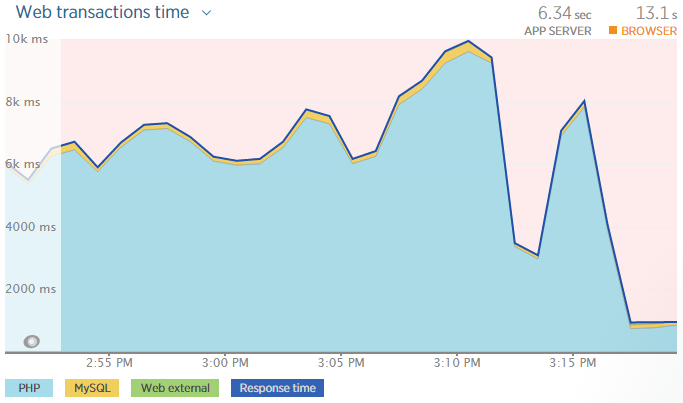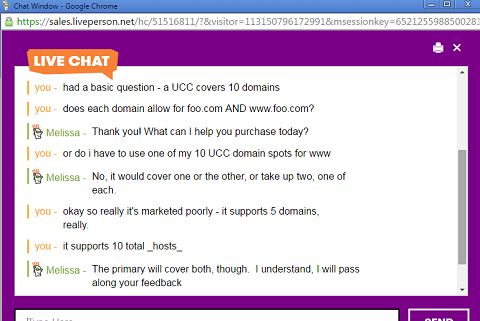TL;DR - fun stuff is at the bottom.
It's time to spend a few minutes to share something that hopefully will solve a headache of mine - and maybe one of yours.
I own Synology DS2411+ units. They're very space efficient, and quiet - the form factor is great, and something I haven't found anywhere else (WHY?!?!) - there is a premium for their specifically designed chassis and software - and in the past I've found it to be worth it. Nowadays with ZFS or Btrfs around, cheaper hardware and such... I'm not as happy, but I'm also not in the market for a new setup. 🙂
Anyway - one of the main things I want to do is to try to back up everything on my physical units to the cloud. The first barrier to entry is that there is only one truly "set-it-and-forget-it" *unlimited* provider that has a Linux client - and that is CrashPlan. The pricing is great, but the client is bloated, buggy and weird. I've begged Backblaze to create a Linux client for years and there was some chatter about it, but still nothing public. At this point with B2 being launched, I'd be surprised if they do it at all, or just have a B2-based app instead (in which case it will be utility based billing. I want unlimited!)
Back to our only option - CrashPlan.
Due to the terms of distribution with CrashPlan it looks like it cannot be officially packaged by Synology. Which is where the PC Load Letter option came in handy. However it had some issues over time, and the Java distribution would require reinstall periodically. Ultimately, it wasn't the most reliable solution.
So I decided - I'll use the instructions to guide me on a manual install, one that isn't subject to issues with the package manager or Java changes. After using the instructions on the Synology wiki and what I thought was a clean, successful installation that worked for a couple weeks, it too crashed. Somehow during one of CrashPlan's own updates (I believe) it wound up wiping all the .jar files away. Trying to reinstall CrashPlan (the same version) actually failed after that for some unknown reason (how?!?!)
Recently I had some issues when trying to setup a Redmine install for a client. Even following the exact instructions it wouldn't work. No idea why. So I decided to look into a Docker-based setup. Wouldn't you know, I found a package that worked perfectly out of the gate. Docker to the rescue.
I realized not too long ago that Synology added Docker to it's package center. While I dismissed it as being more bloatware and attention being paid to the wrong aspects (just make a rock solid storage platform, I don't need an app store concept on my NAS!) I decided I should take a peek at the possibility of running CrashPlan in a Docker container. That way, it was self-contained in a richer Linux environment, with it's own management of the Java runtime stuff.
As of right now, I will say - "Docker to the rescue" - again. After fixing up the right command line arguments and finding a Docker image that seems to work well, it's been running stable and inherited my old backup perfectly. I use -v to expose the /volume1 off my Synology to the container and it picks up exactly where it left off.
That's quite a lot of explanation for what boils down to the magic of it all. Here is the working image and my command line arguments to it, to expose the ports and volumes and such properly. Enjoy.
docker pull jrcs/crashplan
docker run -d -p 4242:4242 -p 4243:4243 -v /volume1:/volume1 jrcs/crashplan:latest
Add more -v's if needed, and change the ports if you wish. Remember to grab the /var/lib/crashplan/.ui_info file to get the right key so you can connect to it from a CrashPlan Desktop application (once of my other complaints with CP)
UPDATE 2017/01/07 - after running this for months, I'll share my script (I believe it actually requires installing bash from ikpg to really be solid) - I put it on my data volume (volume1) in the crashplan directory and it seems to persist. Any time I want to update the container or something seems to have crashed (since CrashPlan can crash often, thanks mainly to Java and the large amount of files and how it is RAM heavy) I can just run this. It's able to persist the relevant configuration between docker runs, and runs more stable than any other solution I've used or tried. CrashPlan is still much slower than Backblaze but it's still the only service with a Linux compatible client and unlimited data (I don't consider ACD to fit the mold exactly yet)
cat /volume1/crashplan/crashplan-docker.sh
#!/opt/bin/bash -v
docker rm -f `docker ps -qa`
rm -f /volume1/crashplan/log/*
docker pull jrcs/crashplan:latest
# ref: https://hub.docker.com/r/jrcs/crashplan/
docker run \
-d \
--name=crashplan \
--restart=always \
-h $HOSTNAME \
-p 4242:4242 \
-p 4243:4243 \
-v /volume1:/volume1 \
-v /volume1/crashplan:/var/crashplan \
jrcs/crashplan:latest

